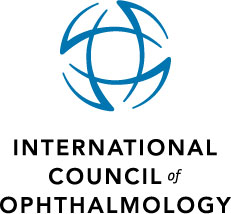Patient:76 years of age, male, BCVA 0.7 at OD, 0.6 at OS.
Ocular Medical History: blurry vision at OS since 3 years.
General Medical History: TPHA tests (TPPA IPAT) in serum positive (Titer <1:80), human immunodeficiency virus test negative, no evidence of neurosyphilis.
Purose: to present acute syphilitic posterior placoid chorioretinitis (ASPPC) in an immunocompetent 76-year-old man as reactivated syphilis.
Methods: Colour Photography Posterior Segment, FFA, SD-OCT.
Findings:
Colour Photography Posterior Segment: large, yellowish, placoid, outer retinal lesion.
FFA: small focal hyperfluorescence in the area of the hypofluorescent lesion, peripheral multifocal choroiditis with multifocal leakages, diffuse late macular edema, papillary leakage,
SD-OCT: cystoid macular edema, epiretinal gliosis. small amount of subretinal fluid.
Discussion:
Acute syphilitic posterior placoid chorioretinitis (ASPPC) is a rare manifestation of syphilis. (1-3) Fundus and angiographic changes in ASPPC may mimic other chorioretinal diseases, including acute posterior multifocal placoid pigmentepitheliopathy (APMPPE). It was suggested that inflammation-associated perfusion abnormalities of the choriocapillaris contribute to the pathophysiological process. Most cases respond to systemic treatment of the underlying Treponema pallidum infection.
Literature:
Eandi CM, Neri P, Adelman RA, Yannuzzi LA, Cunningham ET Jr; International Syphilis Study Group. Acute syphilitic posterior placoid chorioretinitis: report of a case series and comprehensive review of the literature. Retina.2012 Oct;32(9):1915-41.
Bellmann C Holz FG, Breitbart A, Völcker HE. Bilateral acute syphilitic posterior placoid chorioretinopathy--angiographic and autofluorescence characteristics. Ophthalmologe.. 1999 Aug;96(8):522-8
Szepessy Z, Entz BB, Nagy ZZ. Atypical acute syphilitic posterior placoid chorioretinitis. Ophthalmologe. 2016 Jul 26.
-------------------------- --------------------------
-------------------------- --------------------------
-------------------------- --------------------------
-------------------------- --------------------------
-------------------------- --------------------------
-------------------------- --------------------------






